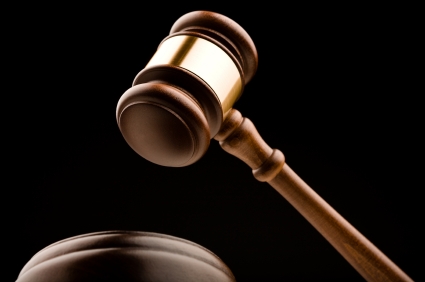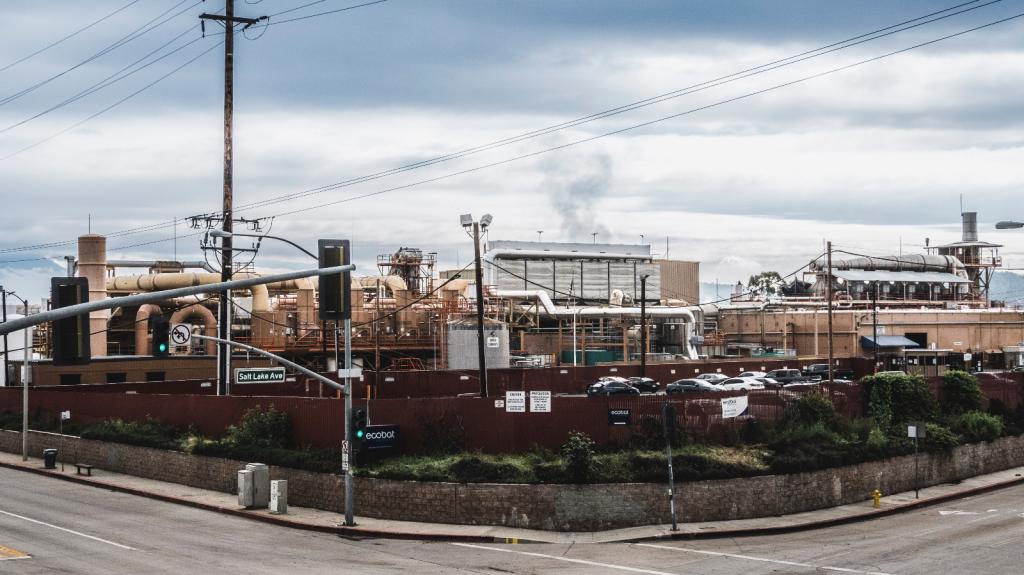This post was coauthored by Matt Pawa. He and I represent the land conservation trusts in American Electric Power vs. Connecticut.
Today, the Supreme Court hears oral argument in American Electric Power vs. Connecticut — a case in which six states and other plaintiffs are trying to put emissions limits on America’s five largest greenhouse-gas polluters. The states are invoking their right, recognized by the Supreme Court more than a century ago, to seek relief in federal court when polluters in other jurisdictions send dangerous air or water pollution across state lines. The suit charges five gigantic electric power companies — American Electric Power, Southern Company, Duke Energy, the Tennessee Valley Authority, and Xcel Energy — with contributing to a massive “public nuisance” by knowingly emitting 650 million tons of carbon dioxide per year, despite having the technology and know-how to significantly reduce their emissions. All by themselves, these five huge companies account for 25 percent of the power sector’s CO2 emissions, 10 percent of the entire nation’s emissions, and 2.5 percent of the world’s emissions.
The states and other plaintiffs (the City of New York and three land conservation trusts) point to severe threats to public health, natural resources, and property from global warming. California is losing its snowpack, the state’s largest freshwater reservoir. Coastal states such as New York and Connecticut are losing coastline to rising seas and face billions of dollars in coastal infrastructure damage during stronger storm surges. Iowa faces harm to its vital agricultural economy from greater heat and drought. The five power companies, as the biggest carbon polluters in the nation, are contributing to these harms, and their emissions must be reduced in order to mitigate the risks to the states and other parties.
The roots of this case run deep in American law. The states gained the right to bring suits over cross-border pollution when they joined the Union, as an alternative to diplomacy and warfare. The Supreme Court held in 1901 that Missouri could sue Illinois to stop the flow of typhus-contaminated sewage down river. As Chief Justice Oliver Wendell Holmes elegantly said in the 1907 a case called Georgia vs. Tennessee Copper:
When the states by their union made the forcible abatement of outside nuisances impossible to each, they did not thereby agree to submit to whatever might be done. They did not renounce the possibility of making reasonable demands on the ground of their still remaining quasi-sovereign interests, and the alternative to force is a suit in this Court.
The states’ right of access to the federal courts over interstate air and water pollution continues today even after the passage of federal environmental legislation. According to a pair of late 20th century Supreme Court cases called Milwaukee I and Milwaukee II, the states’ right to sue is terminated only if and when Congress and the Environmental Protection Agency provide a specific regulatory remedy — a limitation on the pollution in question — that directly addresses the problem that gave rise to the dispute.
Four of the five defendants are private corporations, and they deploy a barrage of “sky is falling” arguments for why they should escape any liability or remedy for their massive pollution. The fifth defendant, TVA, (represented by the Justice Department) makes slightly different arguments but still contends the suit should be stopped. While the arguments come under a variety of legal labels, they boil down to several themes.
Their most common claim is that there could be billions of plaintiffs and billions of defendants in cases about global warming, making this case unlike any past interstate public nuisance and utterly unmanageable. But, in truth, there are only 50 states that can bring these cases. And there are only a limited number of private parties, like the land conservation trusts, that could satisfy a public nuisance law requirement for “special injury” that is designed precisely to keep every landowner or private citizen from bringing cases like these.
On the other side, there are only a limited number of polluters big enough to be sued — tens or maybe hundreds of companies, but not millions or billions. Public nuisance law requires that defendants make a “meaningful” or “substantial” contribution to the problem. That is a familiar principle and it leads to manageable results. For example, compared to the smallest of the defendants in this case (which emits 70 million tons of CO2 per year):
- There are only 14 power companies with annual CO2 emissions greater than 50 million tons, and they account for 46 percent of the entire power sector’s CO2 emissions.
- There are only 30 companies with annual CO2 emissions greater than 20 million tons, and they account for 69 percent of power sector emissions.
- And there are only 57 companies with annual CO2 emissions greater than 10 million tons, and they account for 85 percent of power sector emissions.
If you look at the next largest industry, petroleum refineries, the entire industry emits only 200 million tons per year — less than the largest defendant, American Electric Power. The highest-emitting oil refining company emits less than 10 million tons per year. There are only two oil companies that emit more than 5 million tons per year, and only 26 that emit more than 1 million tons. Courts have always employed tests to weed out trivial contributors.
So the floodgates won’t spill open with billions of plaintiffs or defendants. These are not good arguments for letting these five enormous polluters, responsible for more than 1/50th of all the world’s carbon dioxide, keep discharging with impunity.
The companies and TVA also argue that the courts would get embroiled in an impossible task of determining, like Goldilocks and the Three Bears, the level of carbon pollution that’s “just right” for all the polluters in the world. That’s nonsense. As the Supreme Court said in its 2007 global warming decision, Massachusetts vs. EPA, even agencies and legislatures “do not generally resolve massive problems in one fell regulatory swoop” but “whittle away at them over time.”
This case is about the biggest polluters in this country, and all the states are asking is that those companies take feasible, affordable steps to cut their pollution. That doesn’t require more than proving what these five companies can reasonably do on their own. There are strong precedents in public nuisance cases over water pollution from as long ago as the 1880s, when courts ruled that the biggest polluters could be required to cut their discharges even if the stream might remain heavily contaminated because of other, smaller sources beyond the court’s power. In essence, the courts held that it is no defense for the largest polluters to argue that other sources, large and small, also are polluting.
The defendants’ last big argument is that the federal courts should leave global warming exclusively to Congress and to EPA. The states and their partners agree that their case will be over when there has been real action — when EPA has put some real limit on the pollution from the power companies’ existing plants. That’s what the Supreme Court found in the two Milwaukee cases. But all parties agree that at the present time there are no federal regulatory limits at all on carbon pollution from existing power plants.
True, EPA has authority to curb carbon pollution under the Clean Air Act, as the Supreme Court recognized in Massachusetts vs. EPA. EPA has taken initial steps, by determining that greenhouse gases endanger public health and welfare, by setting clean car standards, and by requiring carbon permits for the biggest new sources. And EPA recently agreed in a settlement to decide, by May of next year, whether to set CO2 standards for existing power plants.
We don’t doubt the Obama EPA’s good faith, but like President Ronald Reagan, we say “trust but verify.” In its brief for TVA, the Justice Department emphasizes that EPA is free to issue no standards at all come next May. And the power industry is suing EPA to block each of the steps already taken, and opposes the effort to set standards for existing plants. The Southern Company, along with many other polluters, is furiously lobbying Congress to yank EPA’s Clean Air Act authority away and to overturn Massachusetts. For these reasons, it would be wrong for the Supreme Court to count these chickens before they hatch.
The Justice Department’s brief says this case should not be the nation’s “first line response” to global warming. Better to think of this case as the nation’s last resort, if EPA does not act, or is blocked from acting. In that event, the sky will not fall if federal courts begin hearing the evidence on what America’s largest global warming polluters can do to curb their emissions.



